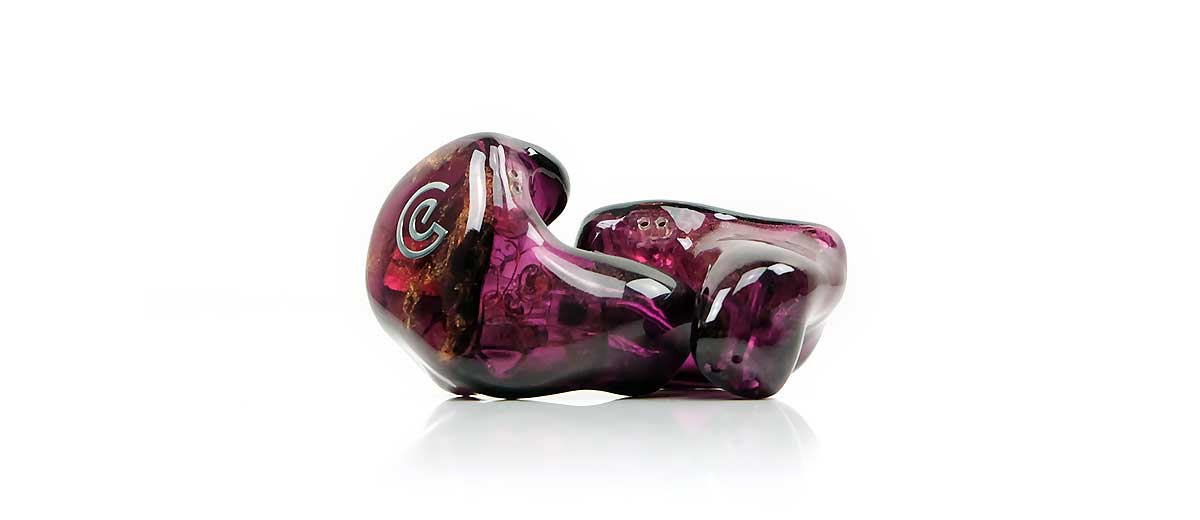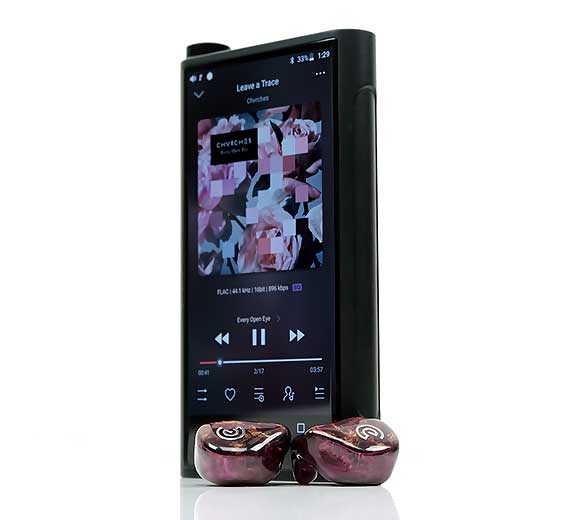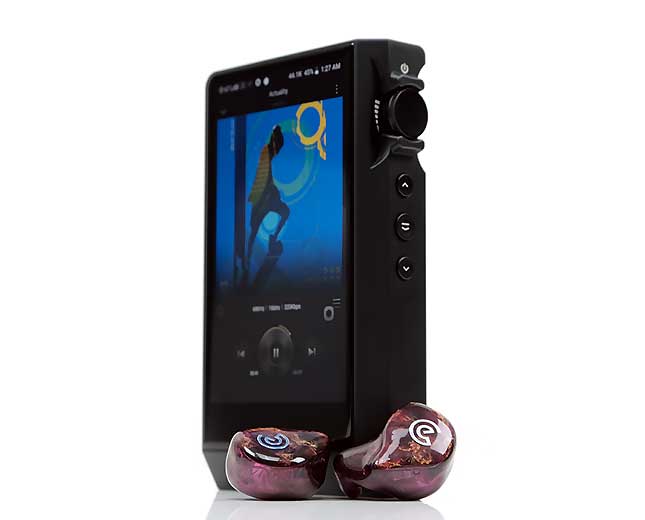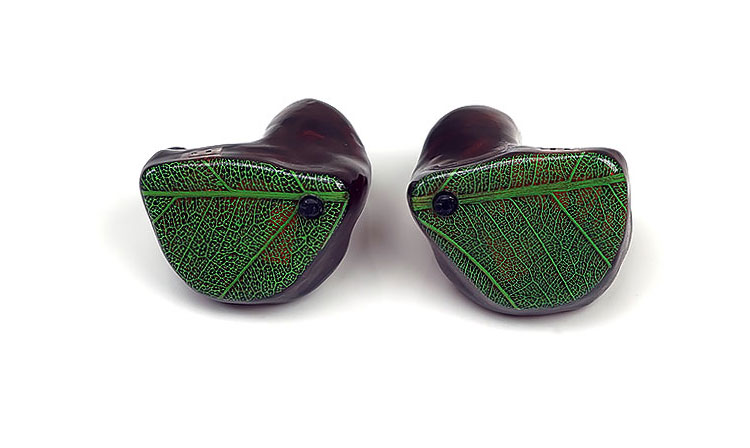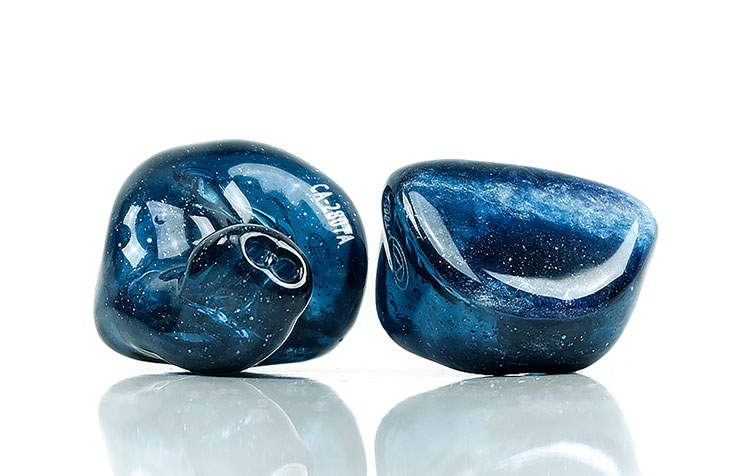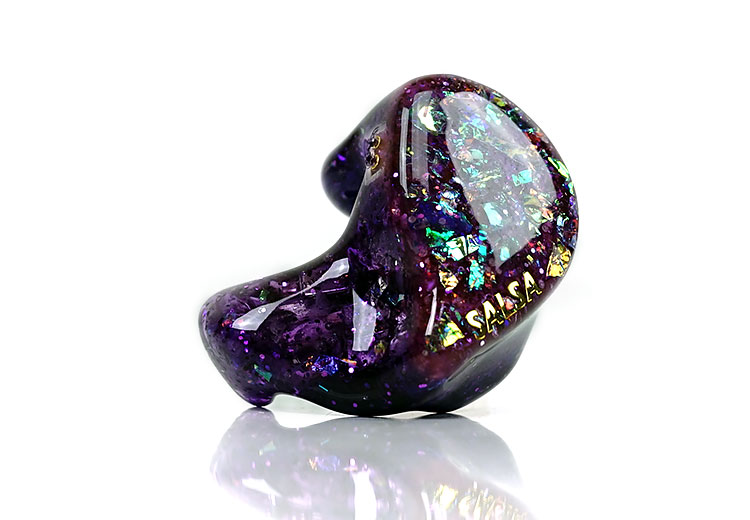Craft 4 Sound Impressions
Summary
This is relatively emphasized at both ends of the spectrum but to describe the Craft 4 as V-shaped is a little on the crude side.
The emphasis in the tuning is more focused on bringing out the best in percussion, both in terms of clarity and tonality. To that end, it has a nice overall balance and a pleasing lack of veil or sharpness.
That balance means a little more mid-bass punch than outright sub-bass rumble or a slow decay as well as an upper mids emphasis from 1-4k. The treble tuning is clean but not so forward as to create an unnatural percussion sound.
The Craft 4 also seems to dip the lower mids with a drop from 200Hz to around 1k to keep the bass from bleeding into the mids. The instrumental tone is light but smooth and clean with good separation though not terribly forward with that dip.
Male vocals are easy to pick out even if not that forward which is pleasing. However, female vocals that pitch higher in a mixed or head voice/falsettos do much better on the Craft 4 and thankfully avoid any unpleasant sibilant overtones.
I suspect there is a bit of fade from 4-5k onto about 8k to take any potential BA sting out of the highs to keep the vibe smooth but clear on the Craft 4. That also means a tight but natural sound for cymbal and hi-hat work with a level of decay that does not linger that much.
Low-End Monitoring
Now is there enough true sub-bass presence for the likes of dub-step track mixing in the studio? I am not too sure about that. At least not compared to a dynamic driver there might be less space to thin out the bass for kick drum channel mixing.
The drop into the lower-mids does help with separation though and there is far less bleed into the lower-mids compared to the likes of the FIBAE 4.
For percussion and traditional trance mixing which needs a more rapid BPM and those aiming for a tighter level of timing then the dual-sub BA drivers do have the speed to keep up. They provide a decent bass fundamental to prevent it from sounding too shallow.
Timbre
The timbre on the Craft 4 surprised me and in a good way. The low-end and upper mids are elevated to emphasize low and high-pitching percussion presence along with higher-pitching vocals, to begin with.
However, Craft Ears have toned down the amplitude for the highs on that final BA driver so whilst percussion is forward and strong they are not piercing.
That is a sensible balance and one that develops Craft Ears to tease out the percussion presence without upsetting the harmonic balance of the rest of the presentation.
Some might argue that would not mind a bit more bite in their percussion passages or instrumental timbre, perhaps a drier tone and a slightly shorter decay.
However, I think that would come at the cost of some additional listener fatigue and some unnecessary distraction with uneven or narrow bandwidth peaks possibly adding too much sharpness to the mids timbre.
The net effect is clear but smooth delivery with a nice balance between weight and articulation throughout that elevated upper-mid performance.
Staging
The Craft 4 has some decent depth for a BA low-end and it does extend quite well. It is not as forward through the mid-bass as something like Custom Art’s FIBAE 4 which has even more quantity and coloration through to about 300Hz.
However, it does have better low-end separation which in turn helps keep the mids a bit cleaner and open sounding. You get that classic perception of midrange space with that lower-mids dipping behind a forward upper-mids vocal positioning.
The top end has a better-than-expected headroom and never did I feel the Craft 4 lacked air which in turn contributes to that nice black background on the Craft 4 mids.
Craft 4 Synergy
Efficiency
First up these are not super sensitive monitors in the Zeus, Andromeda, or Solaris class. They are easy to drive but I would place the SPL a little lower around 107-112dB as they need a bit more current than the aforementioned sensitive monitors.
Certainly, it is a little harder to drive than the Custom Art FIBAE 4 and Jomo Audio’s Salsa which are 115dB SPL and 109dB SPL respectively as well as being 4-BA configurations. It is almost on par with the Lime Ears Model X, though this competitor has no specific SPL or impedance rating advertised.
They also perform very well indeed for noise floors that tend to exhibit a bit of hiss such as the FiiO M11 which was dead quiet on its unbalanced output. So also the N6ii with the E01 motherboard Class A and Class AB output.
Overall, there are no real issues with the efficiency and sensitivity of the Craft 4. It seems to be hitting a sweet spot for volume and a lack of hiss from sources.
Pairings
I would suggest not just a DAP pairing but a 3rd party cable upgrade to maximize both to your sound signature preference and allow the Craft 4 dynamic range to hit its full potential.
The stock cable is fairly smooth but a little on the compressed side, especially through the mids which do need a bit of space to sound suitable clear.
Effect Audio’s Maestro at $99 is pretty much spot on for those looking to tap into the dual sub-driver power of the Craft 4. You get a nice upgrade in bass definition and slam with this cable without it messing up the mids.
If you need the additional separation in the mids with the low-end slam then the Grandioso is even better but at $199 you start to get the law of diminishing returns kicking in.
Pairing with the Cayin N6ii and the E02 motherboard will do wonders for the general stereo imaging capability of the Craft 4.
You might not get an abundance of treble odd-harmonics so the sound remains smooth but the separation is excellent and boosts vocal presence nicely. You will need a cable that is balanced however as the E02 is 4.4mm only.
If the budget is more limited then the HiBy R5 is again, excellent, for the low-end but will sound a little more intimate through the mids and highs compared to the N6ii/E02 combo.
I would suggest pairing the Craft 4 with the iBasso DX160 if you need something a little more neutral and wider in staging capability. You can always PMEQ the Craft 4 if you need a narrow band peak in the treble or additional sub-bass as it is a more reference-sounding DAP compared to the R5.
Select Comparisons
Lime Ears Model X
€890
Technical
Like the Craft 4, the Model X is a quad BA custom monitor and both can come in universal variants. The configuration is 2 for the lows, 1 for the mids, and one for the highs.
The Craft Ears Craft 4 has a dual (sub)woofer, a single mid-driver, and a single super-tweeter driver for the highs. The Model X uses a passive 3-way crossovers design whereas Craft 4 uses a 4-way.
It is priced a little bit higher than the Craft Ear 4 but does offer something a little different to perhaps justify the price bump with that bass boost switch that follows the Fletcher-Munson loudness curve.
That curve means it is not just bass on the Model X that gets a 6dB increase but a few additional dB is liberally applied up to the upper mids to ensure the signature remains balanced.
The Craft 4 is rated at 10Ω with no official SPL rating but that is one better than Lime Ears and has no resistance or SPL rating for the Model X. I can only tell you which one is technically louder and has less his based on DAPs with standard 32Ω load ratings.
Design
The two companies have a very different design approach, particularly with the nozzle formation. Lime Ears do what I call a ‘pro-fit’ which means a much longer nozzle that goes further into your ear.
The Craft 4 is a little shorter and closer to what I term as a relaxed or audiophile fitting for comfort. Both isolate extremely well as the pressure balance is good but the Model X shades it for me as it suppresses all background noise.
In terms of finishing, the Craft 4 has a slightly smaller shell and smoother finish, particularly around the flush 2-pin sockets which have no coloring on the Model X and stick out a bit.
Performance
There are a few differences between these 2 custom monitors and not just due to the bass boost switch.
The switches on both monitors have a similar level of sub-bass quantity, perhaps the Model X just shading it but not by a huge amount. There is a bit of a longer or sustained elevation on the Model X into the mid-bass and lower-mids so it sounds the warmer of the two low-ends.
The Craft 4 has a more dramatic uptick in dB from 1-4k compared to the more linear rise of the Model X which hits its peak a bit more at 5k. Treble has more presence on the Model X with a further 7-8k peak so percussion has a bit of a cleaner overtone compared to the Craft 4’s wetter and softer treble tuning.
Vocals have a bit more forwardness on the Craft 4 but they sound comparatively rounded with less percussion timbre and odd-harmonic presence. The Model X’s stronger treble tuning teases out a bit more character in higher-pitched percussion passages but also a shade more natural sibilance on female vocals.
Staging is about even on depth but a little taller and wider on the Model X. The heavier treble presence on the Model X makes a bit of a difference here in perceived airiness.
With ‘bass off’ the Model X it becomes much more neutral or mid-to treble centric compared to the Craft 4. It shows off far less depth and power compared to the Craft 4 but it does allow for a cleaner more articulate mids and highest performance.
As a result, the timbre is drier, and lighter but more articulate and still retains a fairly airy signature.
Custom Art FIBAE 4
€725.00
Technical
By all accounts, this is one of the closest competitors to the Craft 4 in terms of pitch and price. The FIBAE 4 is also a Polish-made CIEM as well as a quad-BA configuration though not the same type of drivers or grouping.
FIBAE 4 uses a dual-bore nozzle design whereas the Craft 4 uses a triple-bore. CA has inserted top-firing dual-balanced armatures which is something I think Craft Ears does not use with their Sonion picks.
The FIBAE 4 configuration is evenly split across the main frequency bands; one for the lows, one for the mids, one for the highs, and also one for the super highs. On top of this, the FIBAE 4 logically uses Custom Art’s FIBAE™ technology, hence the name.
The Craft 4 turns that upside down a bit with a dual (sub)woofer for the lows, a single mid-driver, and a single super-tweeter driver for the highs. No impedance technology that I know of on the Craft 4 and no official SPL rating whereas the FIBAE 4 is rated at just 8.1Ω and 115dB SPL.
Design
Both have galaxy or nebula swirly color designs with acrylic custom fits and both look amazing. The blue and purple contrast complement each other in a way. There are some minute differences in their construction, however.
Though both have a similar nozzle length and shape their actual body size and faceplate differ with the Craft 4 slightly smaller. That means it will sit a little flusher to your ear than the FIBAE 4 which sticks out a bit more. Both are all BA so no venting and both isolate equally as good.
Both come with a flush 2-pin 0.78mm termination 2-pin flush socket at the top using a 4-wire 1.2m SPC stock cable in a silver jacket finish.
Performance
Both are aiming for similar presentations but you can hear where they also differ. Both have a solid sub-bass elevation, however, the FIBAE 4 carries its elevation much further into the mid-bass with a gentler drop into the lower mids.
As a result, the FIBAE 4 sounds ‘closer’, warmer, and with more bass bloom compared to the Craft 4’s low-end.
The Craft 4’s bigger drop from the mid-bass into the lower-mids attenuates instrumental presence a little. In doing so, it pushes forward vocals with a bit more clarity and separation from the low-end which helps introduce a nice sense of balance to the presentation, especially for electronic music.
FIBAE 4 around 1-2k has much less elevation and a little drop around 3-4k so it is not as airy sounding as the Craft 4 which has a better bump from 1-5k.
Both have fairly relaxed treble but it seems more relaxed on the FIBAE 4 due to the forward and warm low-end coloration. Neither will give you sibilance issues on vocals.
Timbre on both is smooth and wet rather than dry but on the FIBAE 4 is more rounded and even-harmonic biased. The Craft 4 has a bit more odd-harmonic infusion that is trapped into the elevated upper mids producing a slightly cleaner sound to percussion timbre and a bit more accuracy on vocal delivery.
Jomo Audio Salsa
SG$1099
Technical
The Salsa is also a quad-BA custom monitor but is priced a little higher than the Craft Ear at roughly $690 at today’s exchange rate. The pitch here is slightly different with more of a mid-centric emphasis.
To achieve that, the Salsa uses a slightly different configuration with an XL BA driver for the lows, 2 vented for the mids and one for the highs compared to the Craft 4’s dual-driver sub, and a single BA each for the mids and highs.
The crossover is also slightly different. The Salsa uses Jomo Audio’s 4-way CSU which is an electrical filter and an acoustical path design for enhanced phase control. The Craft 4 uses a purely electrical 4-way crossover.
The Salsa is rated at 20Ω and 109dB SPL compared to the lower 10Ω of the Craft Ears Craft 4. Since we do not know the SPL I can only give you what I know from DAP tests in terms of current demand and background noise.
With the Lotoo PAW Touch Gold and FiiO’s M11, the Salsa got louder a bit faster than the Craft 4 so I would presume the Craft 4 SPL is lower than 109dB SPL. Neither are overly sensitive to noise with the M11 in unbalanced and balanced delivering a hiss-free experience on both monitors.
Design
The Salsa Tidal Purple Mist design is a very busy-looking finish with huge sparkle levels compared to the slightly more muted Craft 4 design I have here.
However, I prefer the Craft 4 design. The Salsa is excellent but almost too busy and perhaps a shade less flake would give it more of a pro feel about it. Horses for courses though so both will have fans of the flaky purple finish ethos.
The form factors are different, however. The Salsa is much bigger and sticks much further out of my ear yet the nozzle is shorter than the Craft 4.
That means the Craft 4 fit and passive isolation are much better. That could well be down to different molds as you can only make from the impressions you have.
Performance
These are two very different sound signatures. The Craft 4 is more W-shaped though the final uptick on the treble is more subdued than aggressive. It is more powerful sounding but with a good vocal boost and a relaxed treble delivery.
The Salsa is N-shaped with a distinct emphasis on the mids to upper mids resulting in more vocal emphasis and a competitively neutral low-end. Treble is also fairly relaxed beyond 4-5k but percussion that straddles the upper-mids to lower treble has a little more bite.
Staging is much more intimate on the Salsa with vocals and higher-pitching percussion front and center. The low-end is not as deep with a punchier mid-bass emphasis so it lacks the power and more grandiose staging quality of the Craft 4.
The Craft 4 vocals have a good presence but they are not as forward with lower mids a little more dipped in deference to the more powerful low-end driver configuration. Treble is a little more liquid with a wetter attack on percussion and vocals.
Timbre is sweeter on the Craft 4 compared to the drier tone of the Salsa with a bit more low-end warmth and slightly less treble energy.
My Verdict
I am quite impressed by the performance of the Craft 4. I hate saying “for this price point” because of the unintended bias that can bring in but in this case, I can make an exception because many of the competing 4-driver CIEMs to the Craft 4 are a little bit more expensive.
This is a beautifully crafted custom monitor with a loosely V-shaped sound signature. It offers a refined and sibilant free vocal delivery, articulate percussion, and a decent level of control on the low end.
This is tuned to enjoy without rapid fatigue though a small cable upgrade will introduce a much better level of dynamic range over the stock version.
The Craft 4 competes very well indeed for less money and for a freshman audio company, Craft Ears is off to an excellent start.
Craft Ears Craft 4 Specifications
- Frequency response 15Hz-22kHz
- Impedance 10 Ohms @ 1kHz
- Noise Isolation -26 dB
- 4-way Electrical Crossover
- 3-Bore Acoustical Design

